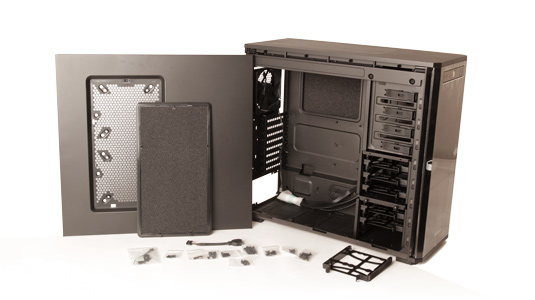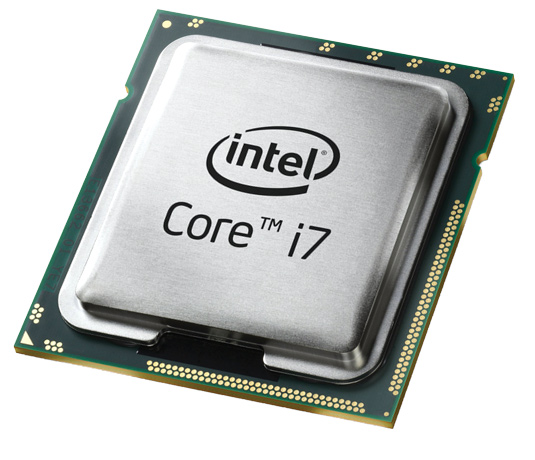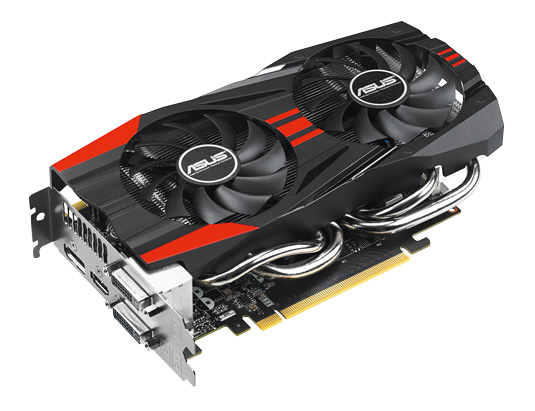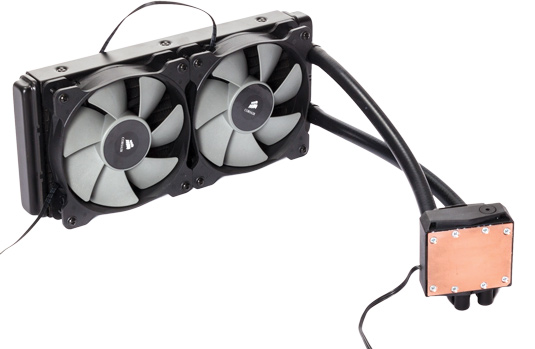How to pick the right components for your own workstation
Designing and assembling your own workstation is easier than you may think, says expert Lance Evans.

The main reason people build their own box is due to simple economics: it is generally much cheaper to build your own computer. A carefully assembled build can deliver a box with specs that might cost up to twice as much from a branded vendor - and usually the built unit will contain better quality components as well. These components all come with their own warranty, so you are still well protected. And should something falter, like a drive or memory chip, you can pop it out, send it back and keep your workstation working.
When you sit down to choose the actual components that will go into your electronic offspring, it can be overwhelming. Taking a logical, step-by-step approach will help you to narrow things down a bit. Reading reviews online is a great way to discover specific components, and get a feel of what might best suit your particular build.
But take heart in the fact that no matter what components you choose, real clunkers are few and far between these days. We got to work with some of the best manufacturers out there, and the components were a real pleasure. Here is some of the thinking that went into our computer design process, and why we chose the items that we did.
01. Start with a fixed budget
We wanted a kicking computer, but not one that would prevent us from paying the mortgage. So our goal was to keep this build to about $3,000/£1,850. Granted, that isn't a cheap computer, but at this price point we are hoping to assemble a workstation that is very powerful, very versatile, and with specs that match much more expensive retail builds. We also wanted one that was suited to a creative content developer.
02. Choose your platform
Mac, Linux or Windows? Although there are ways to make Mac clones they are not without their technical issues, so we decide to stick with Windows for our box.
- Price: Window 8 Pro $200/£124; Linux Free
03. Which CPU should you opt for?
In the past, I've always built with AMD chips, but at the time of writing Intel seemed to be ahead in the speed game. If we'd had a slightly tighter budget, an AMD chip might have won the toss. With multicore chips, we need to look at both the number of cores, and the speed of them.
We are lucky in 3D, as most of our software takes advantage of those cores. But that may only be at the rendering stage - a lot of our day-to-day work gets done using just one core, so raw speed is still important, even with many cores.
Daily design news, reviews, how-tos and more, as picked by the editors.
04. Base your choice of chip on CPU speed tests and the price

The easiest way to choose a chip is to bring up some reliable CPU speed tests on the web and scan down the list from the fastest to the slowest chips, stopping when you reach the ones you can afford. Our scanning of the PassMark CPU chart for high-end chips stopped when we got to Intel's Core i7-3970X Extreme, a six-core chip running at 3.50GHz (4.0GHz in Turbo) that sells for about $1,000/£618. The few chips that were faster were much more expensive. Going further down the list, the first significant price saving was the i7-3930K, a six-core running at 3.20GHz that sells for $600/£370.
According to Asus technical representative Juan Guerrero, other than going down the Xeon server/workstation route, Intel's Core i7-3970X Extreme is today's go-to chip for the high-end content creator. But Juan understands that not everyone can justify spending that much on a chip, and suggested that designing a computer could be thought of like buying a house - you should try to get one with room to grow.
While you could opt for a more affordable quad-core system, it might not give as much room to grow as new CPUs come out. Juan's suggestion is to buy the less expensive i7-3930K six-core chip now, and upgrade to the Core i7-3970X Extreme (or whatever replaces it) next year. You should note though, that the Core i7-3970X Extreme is a very power-hungry chip that runs at 150 Watts. This will cost more to run, and be more challenging for the cooling system we have to design.
- Price: $1,000/£620
05. Which motherboard should you choose?

Now that we know what chip we want, we need a motherboard (MB) that supports its LGA 2011 socket. Still working with the Asus representative, Juan showed us MBs that his company designed to work best for content creation tasks. His pick was the new P9X79-E WS, because it was designed from the ground up with people like us in mind.
The list of features is impressive: eight memory slots (up to a maximum of 64GB), 12 SATA connections (eight at 6GB/sec, four at 3GB/sec), enhanced graphics capabilities that include 4-Way GeForce SLI and CrossFireX for running multiple GPUs, dual server-grade gigabit LAN/Ethernet (great for heavy sharing of content), seven PCI Express 3.0 x16 slots, enhanced overclocking controls, SSD cache for data speed boosts, and enhanced audio quality/processing. The fan-less design is silent, which is important if you do sound recording.
At just under $500, this board isn't cheap. If we were on a tighter budget we could certainly find cheaper units that would do the job. But few offer this combination of expandability and cutting-edge technologies, so we opted for this.
- Price: $500/£310
06. What video card/GPU should you choose?

The GPU market is generally divided into two segments: the consumer and/or gamer market, and the pro market. Nvidia's Quadro line is an example of pro market cards. That said, consumer cards are increasingly being used for pro work. Juan pointed us to the Asus GeForce GTX 760 DirectCU II OC. The advantages of this card are many: it will do a very good job with 3D content, offers a range of outputs (two DVI, one HDMI, one DisplayPort), SLI, and runs both cool and quiet. It's compact, but has two PCI slots.
- Price: $260/£160
07. What RAM will work best with the motherboard you've chosen?

Memory manufacturer Corsair is qualified to work with Asus MBs. Corsair's Rick Allen explained that each core in the CPU needs discreet RAM to do its work. He suggested at least 4GB per core; we rounded up to 32GB of memory. We got four 8GB DDR3 modules from the Vengeance Pro Series.
- Price: $400/£245
08. What power case and cooling system is best?

Power, PC case and cooling are often thought of together simply because they have often been sold together. Corsair's Rick and Asus's Juan said we needed about a 750 Watt PSU, and suggested Corsair's fully modular AV860, which gives us plenty of juice at 860 Watts. The AV860 also contains technology that offers unusually quiet operation.
- Price: $230/£140
For a case, Rick suggested the Obsidian Series 550D, a large mid-tower case standing 19in tall. This is a case that was designed from the ground up with cooling and noise reduction in mind. The basics include six hard-drive bays with integrated 2.5in SSD support, all with tool-free trays and noise-reduction silicon mounts; four optical drive bays with removable trays, front panel USB 3.0 and audio connections, three 120mm fans with room to add more, and room for additional cooling systems. The case is lined with sound-dampening material.
- Price: $150/£92
We chose Corsair's Hydro Series H100i water cooler. This will help a powerful CPU run cooler, standard or overclocked.
- Price: $110/£68
09. What hard drive, SSD and optical drive should you get?

There's no limit to what drives you can add to a system, and today the hot choice is a solid state drive (SSD). Something of a hybrid between RAM and a traditional hard drive, SSDs are really fast and can significantly reduce hard drive access times. Booting into Windows from an SSD boot disk is super-fast, as is running programs and file-management chores.
We took a conservative approach by using separate drives for different uses: a 256GB drive as our main OS drive, and another two at about the same size intended for active work-in-progress storage, or perhaps one for active storage and the other for use as a program cache drive. However, with 32GB of RAM, we're not sure how much a cache drive is going to be needed.
We tried out three of today's top-rated drives: Samsung 840 Pro ($240/£150), OCZ Vector ($260/£160), and SanDisk Extreme II ($230/£142). Our real-world tests were impressive, but we won't walk away from traditional HDs just yet. Seagate's Desktop HDD.15 ST4000DM000, a 4TB drive with 64MB cache SATA 6.0GB/s internal unit, proved a good option at this price.
- Price: $170/£104
With optical drive prices plummeting, we went first class and opted for the Asus BW-14D1XT.
- Price: $100/£61
10. What audio card should you invest in?

Our Asus motherboard sports some nice enhanced audio, but as we are primarily creative content producers, a specialised card seems in order. We went with Creative Lab's Blaster Z card, model SB1500.
- Price: $95/£58
11. What optional accessories should you choose?

To round out the build we went to Logitech. Its ultra-cool illuminated wireless (via Bluetooth, so we needed a desktop adapter) K810 keyboard is very stylish. While it seemed small at first because it lacks a keypad, it actually fitted extremely well on our desk, which is jammed with graphic tablets and other gadgets.
We also looked at Logitech's Performance MX sculpted mouse, which has a myriad of controls and a super ergonomic grip (for right-handed people only) that ensures hours of comfortable use. Its Darkfield Laser Tracking technology also gives you precise cursor control on virtually any surface. Either item is a great choice at about $100/£60.
Words: Lance Evans
Lance Evans is the founding director of Graphlink Media in NYC, specialising in creative content for major advertising agencies and their big brand clients. He is the author of many books and DVDs on high-end graphics and 3D. This article originally appeared in 3D World issue 178.

The Creative Bloq team is made up of a group of art and design enthusiasts, and has changed and evolved since Creative Bloq began back in 2012. The current website team consists of eight full-time members of staff: Editor Georgia Coggan, Deputy Editor Rosie Hilder, Ecommerce Editor Beren Neale, Senior News Editor Daniel Piper, Editor, Digital Art and 3D Ian Dean, Tech Reviews Editor Erlingur Einarsson, Ecommerce Writer Beth Nicholls and Staff Writer Natalie Fear, as well as a roster of freelancers from around the world. The ImagineFX magazine team also pitch in, ensuring that content from leading digital art publication ImagineFX is represented on Creative Bloq.
